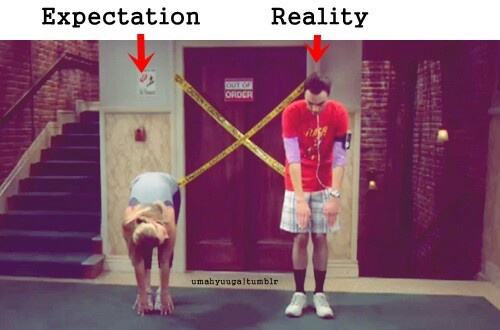
How Increasing Your Flexibility Improves the Health of Your Heart
Was there anything worse than a coach making you stretch before practice? It seemed awful and a waste of time when you were young and supple. Reaching down and touching your toes was hardly a task back when you were in the prime of your life. You could probably run a mile with little effort and get out of bed the next day without holding onto the nightstand. Well, that was then, and when was the last time you touched your toes without sitting down?
Losing our flexibility is a natural part of the aging process. It slowly and gradually creeps up on us until one day we realize how rigid we’ve become. It’s like when you first notice that you need glasses. You remember seeing perfectly well yesterday, but today, everything is a little blurry. How and when the hell did that happen?!?!
As we get older, several subtle changes occur, leading to a reduction in our range of motion.
- Our tendons become less hydrated and stiff
- Our ligaments lose elasticity
- We lose muscle mass
- Our bones become less dense
- The cartilage thins between our joints
In a nutshell, we lose our physical strength because our muscles, ligaments, and tendons deteriorate as we age. Unfortunately, everyone gets old eventually. Fortunately, we can do things to delay the aging process, and stretching is one of them.
Stretching and Your Heart
Limited flexibility in the trunk of middle-aged men is a marker of poor heart health. Of course, the flexibility of your mid-section has a lot to do with the size of your belly, but even less bulky men are guilty of lacking a sufficient range of motion.
Connective tissue surrounds the outer walls of your arteries in the same way your tendons have a casing around them. When the connective tissue stiffens, your arteries constrict and lose their ability to expand when greater blood flow is necessary.
According to a study in The Journal of Physiology, just 12 weeks of passive stretching improves vascular function and arterial stiffness associated with cardiovascular disease. Stretching is also a vasodilator and increases blood flow throughout the body.
While not quite as effective as cardio exercises, passive stretching shows similar benefits. For best results, incorporate a stretching routine into your regular walking, running, or swimming activities.
The Flex Test
We can’t improve what we don’t measure. That’s why we occasionally hop on a scale or invest in a FitBit to track our daily steps. So, how do we measure our flexibility?
The sit and reach test is the standard measurement used by fitness trainers in assessing their clients’ progress. The good thing is that you can do this at home and don’t need some ripped twenty-something guy telling you how out of shape you are. Here’s how you do it:
- Warm up with a light jog or brisk walk.
- Lie a ruler on the floor with one end against a solid surface.
- Lie on your back with the ruler lengthwise between your legs and your feet against the same surface.
- Slowly rise into a situp motion while reaching for your toes with hands touching each other.
- Hold the stretch as far as is comfortable and look at your progress on the ruler.
- The number on the ruler is your flexibility measurement.
Complete the sit and reach test every few weeks and track your progress. It’s okay if you need a tape measure instead of a ruler. Everyone starts somewhere.
Remember, improving flexibility is a slow process, and you shouldn’t expect unreasonable results. If you started lifting weights, you wouldn’t expect to double your bench press overnight. Slow and steady wins the race.
Passive Stretching
By this point, you’re probably asking yourself, “What is passive stretching?”
There are two basic types of stretching; active and passive. Active stretching is the old-school method taught by your Junior High gym teacher. In this type of stretching, you move your body and push it as far as it can go. The sit and reach test is a version of active stretching.
Passive stretching is when you remain in one position while a partner, accessory, or prop assists and enhances your muscles through external pressure. Think of passive stretching as what you see a team trainer doing to an athlete in pregame warmups or how a chiropractor loosens you up before an adjustment.
Any active stretch becomes a passive stretch by having another person activate your muscles with pressure. A passive stretch is so effective because you do not engage your muscles for movement, which allows for a more accessible range of motion. The person assisting is better able to feel the tightness and give a good stretch, whereas most of us stop once we reach a certain resistance level.
It’s a good practice to have someone experienced assist in your passive stretching. If you and a partner decide to give it a try on your own, we recommend learning the proper technique and watching examples of each movement before practicing them.
Now Bend Over
We understand that asking a buddy to help you stretch may be a bit out of your comfort zone. Having someone other than a romantic partner up in your business can get awkward but think about it as you would a massage. Everybody loves a good massage. Many of the chain massage therapy spas have passive stretching services on the menu.
However you decide to do it, it’s vital to your health and well-being to stretch regularly. Your heart will thank you.
Take care, even down there.
Share this Post